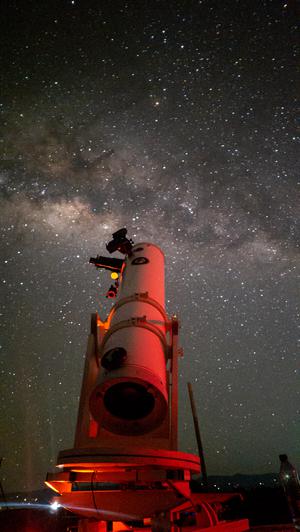Glossary term: 反射式望远镜
Description: 在反射式望远镜(或称镜面望远镜)中,主要的光学元件是一面反射镜,即“主镜”,它的作用是收集入射光。反射式望远镜通常以主镜直径为特征参数,从较小的业余望远镜的10厘米到专业望远镜中使用的最大实体镜的 8 米不等。将多个反射镜组合在一起,可以获得更大的集光面积,其作用相当于较大的实体镜。反射式望远镜有多种类型。例如,在牛顿式望远镜中,来自主镜的光线被一个较小的平面镜侧向反射到目镜或照相机中。在卡塞格林式望远镜中,较小的凸面副镜通过主镜上的开口将光线反射回去。
Related Terms:
See this term in other languages
Term and definition status: The original definition of this term in English have been approved by a research astronomer and a teacher The translation of this term and its definition is still awaiting approval
The OAE Multilingual Glossary is a project of the IAU Office of Astronomy for Education (OAE) in collaboration with the IAU Office of Astronomy Outreach (OAO). The terms and definitions were chosen, written and reviewed by a collective effort from the OAE, the OAE Centers and Nodes, the OAE National Astronomy Education Coordinators (NAECs) and other volunteers. You can find a full list of credits here. All glossary terms and their definitions are released under a Creative Commons CC BY-4.0 license and should be credited to "IAU OAE".
If you notice a factual or translation error in this glossary term or definition then please get in touch.
Related Media
凯克望远镜
License: PD Public Domain icons
了解夜空
Credit: Juan Pablo Botero Londoño/IAU OAE (CC BY 4.0)
License: CC-BY-4.0 Creative Commons 署名 4.0 国际 (CC BY 4.0) icons










